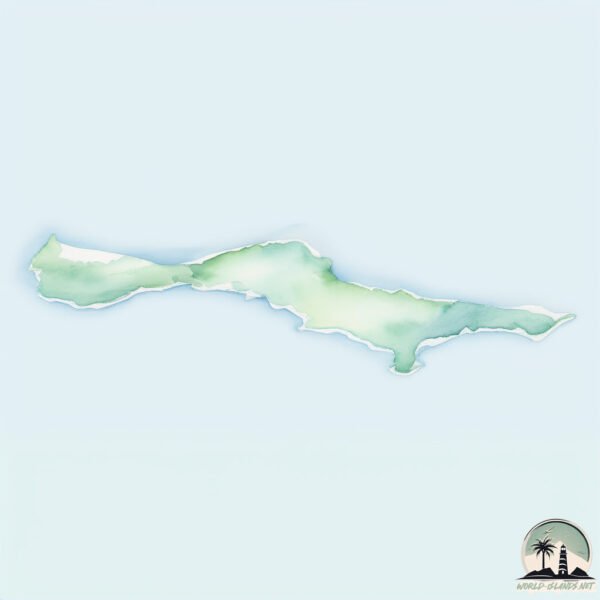Welcome to St. Lawrence , a Polar island in the Bering Sea, part of the majestic Pacific Ocean. This guide offers a comprehensive overview of what makes St. Lawrence unique – from its geography and climate to its population, infrastructure, and beyond. Dive into the details:
Geography and size of St. Lawrence
Size: 4594 km²Coastline: 1501 kmOcean: Pacific OceanSea: Bering SeaContinent: North America
St. Lawrence is a Very Large Island spanning 4594 km² with a coastline of 1501 km.
Archipel: Bering Sea Islands – Situated in the Bering Sea, these islands are known for their unique ecosystems and as critical habitats for a variety of wildlife.
Tectonic Plate: North America – Covers North America and parts of the Atlantic and Arctic Oceans, characterized by diverse geological features and varying levels of seismic activity.
The geographic heart of the island is pinpointed at these coordinates:
Climate and weather of St. Lawrence
Climate Zone: PolarClimate Details: TundraTemperature: Cold
Climate Characteristics: The tundra climate features long, extremely cold winters and short, cool summers. Vegetation is limited to mosses, lichens, and small shrubs due to the low temperatures and short growing seasons. Biodiversity is low, but some specialized species thrive.
Topography and nature of St. Lawrence
Timezone: UTC-09:00Timezone places: America/AnchorageMax. Elevation: 593 m Mean Elevation: 76 mVegetation: Herbaceous CoverTree Coverage: 10%
The mean elevation is 76 m. The highest elevation on the island reaches approximately 593 meters above sea level. The island is characterized by Plateau: Elevated flatlands rising sharply above the surrounding area, with a maximum elevation over 500 meters but a mean elevation less than 300 meters, forming unique highland areas on islands.
Dominating Vegetation: Herbaceous Cover
Vegetation: 9 vegetation zones – Very Highly Diverse Island
Infrastructure and Travelling to St. Lawrence
Does the island have a public airport? no .
Does the island have a major port? yes .
The mean population of St. Lawrence is 0 per km². St. Lawrence is Uninhabited. The island belongs to United States of America .
The name of the island resonates across different cultures and languages. Here is how it is known around the world: Arabic: جزيرة سانت لورانس; German: Sankt-Lorenz-Insel; Spanish: Isla San Lorenzo; French: île Saint-Laurent; Portuguese: Ilha de São Lourenço; Russian: Остров Святого Лаврентия; Chinese: 聖勞倫斯島
Continuing your journey, Arakemchechen is the next notable island, situated merely km away.
Life On St. Lawrence Island, Alaska - My First Video!
Welcome to my new YouTube Channel. This is my first video introducing myself and sharing a little bit about where I am from ...
Life On St. Lawrence Island, Alaska - My First Video!
Welcome to my new YouTube Channel. This is my first video introducing ...
Welcome to my new YouTube Channel. This is my first video introducing myself and sharing a little bit about where I am from ...
Alaska's Native-Owned Island (need permission to enter)
Far from the Alaskan mainland and close to Russia is Saint Lawrence ...
Far from the Alaskan mainland and close to Russia is Saint Lawrence Island, a remote land inhabited by the Siberian Yupik ...
Life on Alaska's Most Remote Island (surreal experience)
Far from the Alaskan mainland is a secluded island in the Bering ...
Far from the Alaskan mainland is a secluded island in the Bering Strait. Here the views span for an eternity, Russia is within sight, ...
United States of America is classified as Developed region: G7: Group of Seven – Major advanced economies, including Canada, France, Germany, Italy, Japan, the United Kingdom, and the United States. The level of income is High income: OECD.
News – Latest Updates and Headlines from St. Lawrence
Stay informed with the most recent news and important headlines from St. Lawrence. Here’s a roundup of the latest developments.
Loading...
Social Media Posts about St. Lawrence
Loading...
Please note: The data used here has been primarily extracted from satellite readings. Deviations from exact values may occur, particularly regarding the height of elevations and population density. Land area and coastline measurements refer to average values at mean high tide.

